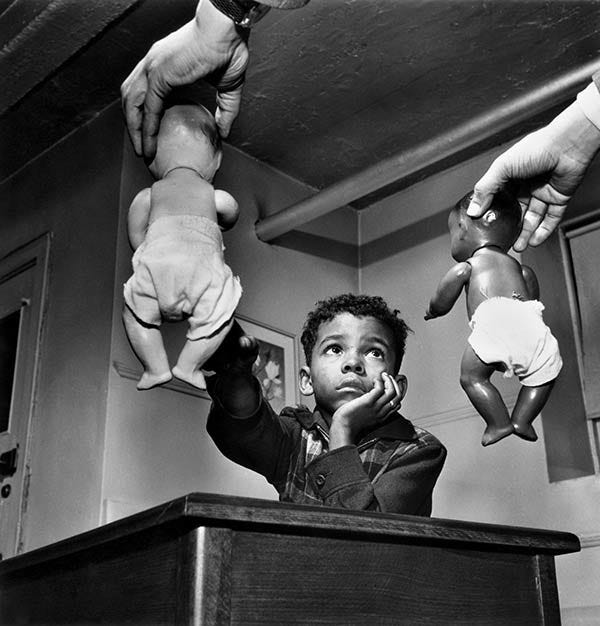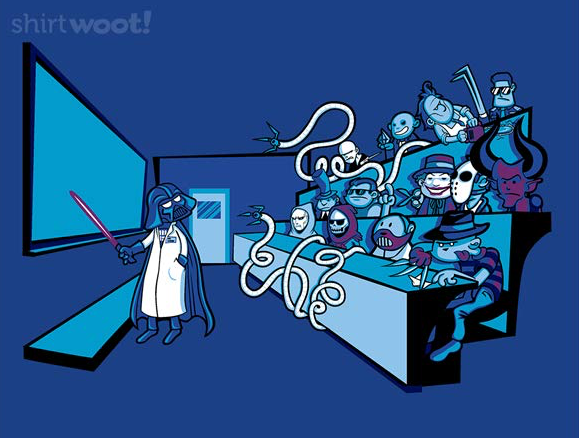
“Parents often think that they are here to guide the little ones. When — in reality — the little ones come forth with clarity to guide you.” — Abraham Hicks
Brown v. Board of Education of Topeka (1954), was a landmark United States Supreme Court case in which the Court declared state laws establishing separate public schools for black and white students to be unconstitutional. The case benefitted hugely from the work of husband-and-wife African-American team of psychologists Kenneth and Mamie Clark. The Clarks conducted a series of tests known as “The Clark Doll Experiments (1939)”.

The (heart-wrenching) doll experiments involved a child being presented with two dolls, completely identical except for the skin and hair colour. One doll was white with yellow hair, while the other was brown with black hair. The child was then asked questions inquiring as to which one is the doll they would play with, which one is the nice doll, which one looks bad, which one has the nicer colour, etc. The experiments demonstrated a clear preference for the white doll among all children in the study.
“If you’re treated a certain way you become a certain kind of person. If certain things are described to you as being real they’re real for you whether they’re real or not.” — James Baldwin
These findings exposed internalised racism in African-American children, self-hatred that was more acute among children attending segregated schools.
You can be forgiven for thinking things may have changed a little since 1939, but in 2005 Kiri Davis repeated the experiment in Harlem as part of her short but excellent film, “A Girl Like Me”. She asked black children and 71% told her that the white doll was “the nice one”.
The doll experiments are a rather extreme example of internalised bias but demonstrate how society reinforces the existing biases of society. The first step in disengaging bias (as our guest on the innovation show and Global expert on bias Howard J. Ross tells us, bias can be disengaged) is to observe when it appears. One place we can easily observe it is in our children, in what they say, in what they think and in what we say to them.
When children utter their first swearword, where did they hear it from? When they use an expression unique to you and your upbringing, where did they learn it from? When they demonstrate a distinct bias whether it be racial or otherwise, how did they internalise that bias?
Whether we care to admit it or not, those who are influenced by us, children in a family, players on a sports team or employees in a business are a black mirror of how we behave, how we act, how we think. They reflect and magnify the ugliest aspects of our nature to which we are often blind. That is the focus of this Thursday Thought.
A Black Mirror

The phrase “Out of the mouth of babes” first appeared in The King James Bible. It means, “from the comments of children, who are honest and innocent . . . comes truth or wisdom”. The hearts of children are wide-open. Children have no hidden agenda and you never have to guess how they really feel, they wear their hearts on their sleeves. I love the simplicity of the solutions children offer, which bypass politics and nonsense. There is no fear of judgement or criticism for asking a simple question or proposing a simple solution, they have not been socialised yet.
We have a natural compulsion to act like the people around us to “fit in” in order to survive. This compulsion originated on the Great Rift Valley when we lived in tribes and if we were ejected from the tribe it would mean certain death. When we are part of any “tribe”, we tend to unconsciously mimic the facial expressions, verbalisations, postures, and movements of other tribe members. Think of a special handshake, except an unconscious one. Because we are biologically encoded to fit in, we transmit bias through our attitudes and behaviour and then preserve and spread that bias further through our culture.
Behaviourism is a learning theory that assumes learners are essentially passive, responding only to environmental stimuli through positive and negative reinforcement. Behaviour theorists believe we start off as a blank slate (tabula rasa) and we learn what is right or wrong by observing others closest to us. Prejudice and intolerance are not native traits, they are learned.
When we are forming our worldview, the influence of any “teacher” is significant. That teacher can be a parent, guardian, relative, nanny, coach or anyone who can inform the opinion of a child. It is a teacher who offers “content” to our children and then this content informs their world view. This highlights the importance of being aware of what we say to children and to those who are influenced by our opinions. What we say “to the mouths of babes”, becomes what comes “from the mouths of babes”.
To the Mouths of Babes

We don’t have parents at school days here in Ireland (that I know of), you know those days when parents come to work and tell the kids what they do for a living? I imagine being asked to do this, forces us to reflect and ask ourselves the fundamental question, “What do I actually do?” Answering this question means extending beyond mastering the elevator pitch of what your job entails. Properly responding means digging deeper and asking, “What is the purpose of what you do? and “What impact does it have on the world?” As our guest on the innovation show Ed Muzio tells us, we should master what he calls a verbalised summary output, a V.S.O. explains what we do so simply and succinctly that it passes what he calls “the “look ma” test”. It should also pass the “to the mouths of babes” test.
Whatever about what we tell our children that we do, the ultimate test comes in them witnessing what we actually do. This can be the output of our work, the impact of our work or the impact we have on those around us at work. Does a room light up when we enter it or when we leave it? Do we even care?
If your child came into your workplace, what would they witness if they were a fly on the wall in one of your meetings or present at an interaction with a colleague, a supplier, a customer?

It is these everyday behaviours that determine who we really are and our children will undoubtedly reflect back to us any undesired behaviours.
Next time we go to scold them or discipline them for their bad behaviour, let’s remember, when you point the finger there are three pointing back at ourselves.
“The true test of a man’s character is what he does when no one is watching.” ― John Wooden
THANKS FOR READING PLEASE HIT A CLAP SO OTHERS MIGHT SEE THIS
Episode 143 of the innovation show is: Iterate: Run a Fast, Flexible, Focused Management Team with CEO of Group Harmonics and award-winning author of “Iterate: Run a Fast, Flexible, Focused Management Team”, Ed Muzio
We discuss an iterative organisation, the only kind of organization that can learn and adapt fast enough to keep up in today’s world. For anyone running a team of managers, or advising someone who does, today we explore the fundamental behaviours that create iteration.
Ed explains how to implement them, and how to get the process started. Iterate defines what management really is and helps readers create a fast, flexible, focused management team that does it well.
He is recognised as one of the planet’s clearest thinkers on management practice and provides a research-based blueprint for a management team that will take the next best step for the organization in any situation.
This show is for senior leadership, front line and middle management, and human resource executives and explores how to equip teams with both knowledge and practical skills so that they not only understand their own purpose but also perform that purpose well amidst ever-changing conditions.
It touches on how to create measurable business results for any management team, of any size, in any industry where complex work and frequent change are the norms.
We explore:
- How to tear down the silos created by the typical Western approach to management
- How managers can manage other managers in an Iterative organization so that the whole organization is coordinated
- How to promote front line self-sufficiency
- How to successfully structure meetings to enable critical decision-making and ensure commitments are carried out
- How to help your reports give their reports insight into the ways their work impacts the big picture
Have a listen:
Have a listen:
Soundcloud https://lnkd.in/gBbTTuF
Spotify http://spoti.fi/2rXnAF4
iTunes https://apple.co/2gFvFbO
More on Ed and the book here: